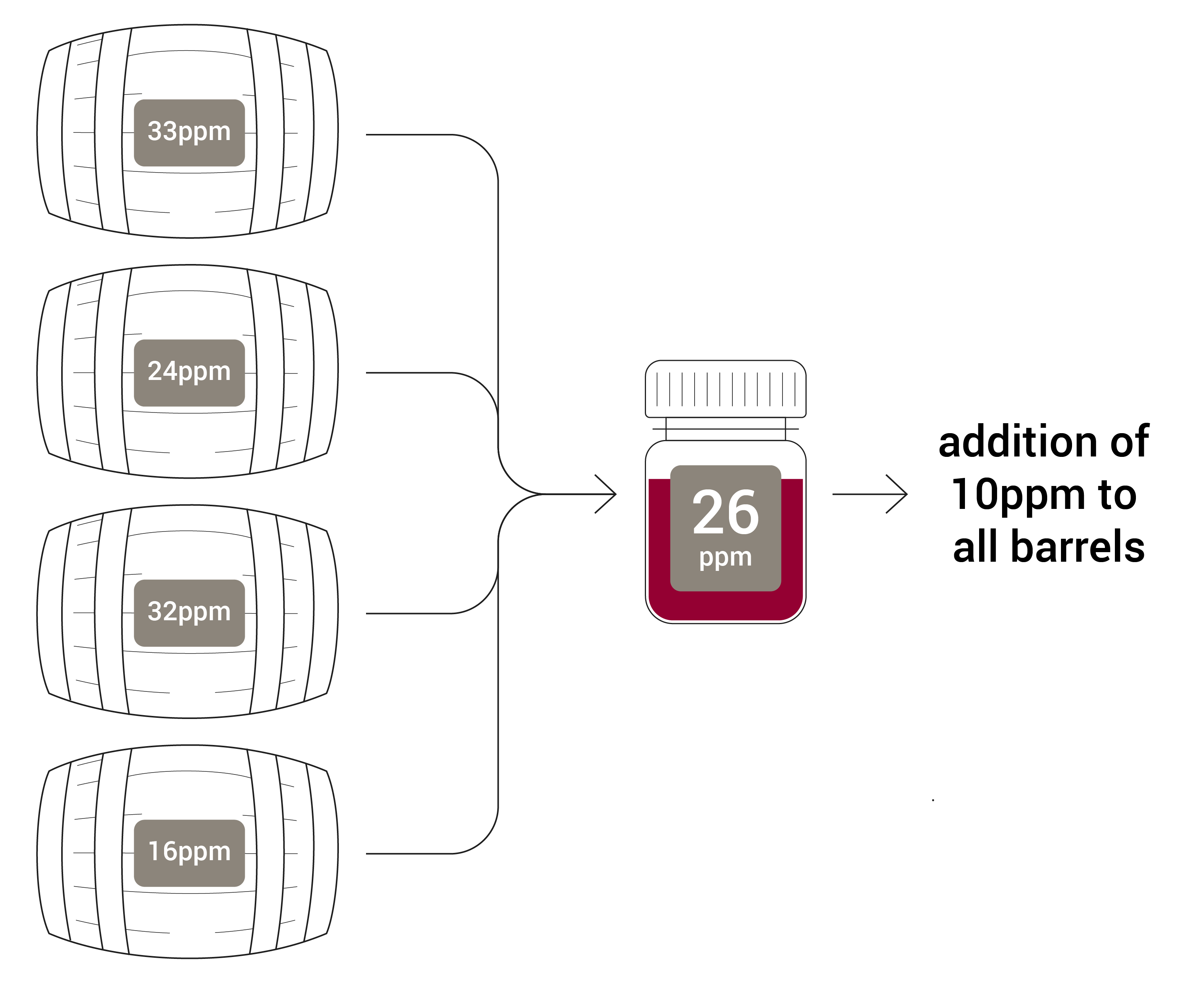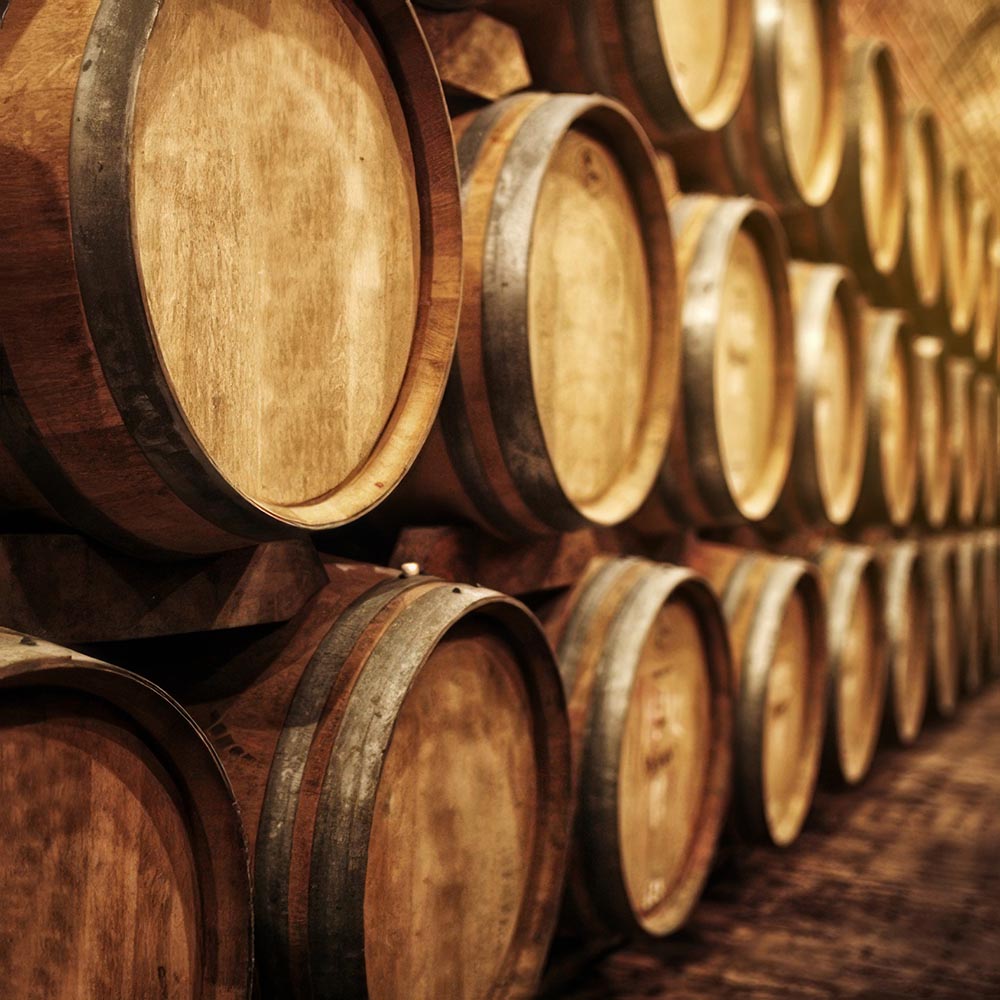Your wine, time and effort is precious – don’t risk spoilage by cutting corners in free SO₂ monitoring. A tailored barrel management program should incorporate regular testing of each barrel, to eliminate the financial risk of compromised wine.
The Importance of Free Sulfur and its Frequent Measurement
Wine production is a delicate balance of art and science, with each step meticulously managed to ensure the final product’s quality and longevity. Among the critical components in winemaking is the use of sulfur dioxide (SO₂). This compound plays a vital role in safeguarding wine against microbial spoilage and oxidative damage, making it an indispensable tool for winemakers (Waterhouse et al., 2016).
Why is sulfur dioxide added to wine?
Sulfur dioxide is added to wine primarily to protect it from undesirable microbial growth and the detrimental effects of oxygen exposure. Without this protective agent, wines can suffer from a range of microbial and oxidative spoilage issues:
Anti-yeast: SO₂ inhibits harmful yeasts such as Dekkera bruxellensis, which can produce off-putting aromas reminiscent of horse sweat and medicinal odors (Grainger & Tattersall, 2016), and Saccharomyces cerevisiae, which can cause spoilage through unwanted refermentation.
Anti-bacteria: SO₂ prevents spoilage from bacteria, such as lactic acid bacteria which can cause taints like mannitol, mousiness, geranium odors, and diacetyl, and acetic acid bacteria which can produce vinegar-like and nail polish remover aromas (Bartowsky, 2009).
Enzymatic Oxidation: SO₂ decreases catechol oxidase activity, an enzyme that can lead to oxidative spoilage (Waterhouse et al., 2016).
Non-Enzymatic Oxidation: SO₂ scavenges hydrogen peroxide, preventing the conversion of ethanol to acetaldehyde (sherry-like, bruised apple aroma) and acetic acid (vinegar aroma and taste). It also binds acetaldehyde to prevent phenolic polymerization, which leads to premature aging, increased bitterness and astringency, and red pigment precipitation (Waterhouse et al., 2016).
Why do we measure free sulfur dioxide?
Testing for sulfur dioxide is crucial because its protective level decreases over time due to various reactions (Waterhouse et al., 2016). Regular barrel-by-barrel monitoring helps to:
- Identify if sulfur additions are missing or excessive.
- Detect early signs of sulfur depletion from microorganisms and oxidative spoilage and prevent their further effects.
- Ensure barrels, which are more prone to contamination due to their high surface area and permeability, remain protected.
- Maintain wine quality and longevity.
- Maximize product value, revenue, and market suitability.
- Control risks and prevent costly mistakes, such as the need to downgrade premium products.
How often should we conduct free sulfur measurements?
Each barrel, despite containing the same wine, undergoes unique variations in oxygen exposure, microbiomes, oak characteristics, and temperature (Zamora, 2019). These factors create distinct aging trajectories, requiring an individualized approach to monitoring and maintenance.
Frequent individual barrel analysis is crucial for reducing risks. This precision approach safeguards your assets and prevents quality downgrades.
Why do we measure free sulfur dioxide?
Testing for sulfur dioxide is crucial because its protective level decreases over time due to various reactions (Waterhouse et al., 2016). Regular barrel-by-barrel monitoring helps to:
- Identify if sulfur additions are missing or excessive.
- Detect early signs of sulfur depletion from microorganisms and oxidative spoilage and prevent their further effects.
- Ensure barrels, which are more prone to contamination due to their high surface area and permeability, remain protected.
- Maintain wine quality and longevity.
- Maximize product value, revenue, and market suitability.
- Control risks and prevent costly mistakes, such as the need to downgrade premium products.
How often should we conduct free sulfur measurements?
Each barrel, despite containing the same wine, undergoes unique variations in oxygen exposure, microbiomes, oak characteristics, and temperature (Zamora, 2019). These factors create distinct aging trajectories, requiring an individualized approach to monitoring and maintenance.
Frequent individual barrel analysis is crucial for reducing risks. This precision approach safeguards your assets and prevents quality downgrades.
Avoiding composite sampling pitfalls:
While composite sampling from a selection of barrels might seem efficient, it assumes all barrels have similar free sulfur concentrations. Sampling only a small subset can lead to incorrect assumptions, affecting the winemaker’s decision process and barrel management. To identify outliers and reduce variance and financial risk, transition to a higher percentage of barrel-by-barrel sampling and customized additions. This ensures accurate protection levels in more barrels, improved decision-making and early problem detection.

Tailored barrel sulfur management:
Tailored barrel sulfur management involves precise and frequent monitoring to adjust sulfur levels as needed, ensuring that each barrel reaches its critical sulfur point. This proactive approach is essential for maintaining the delicate balance required for premium wines and achieving consistent quality across all barrels.
Monthly and Bi-Weekly Testing
Regular sulfur dioxide testing is fundamental to this tailored management approach:
- Monthly testing: By testing each barrel once a month, winemakers can make necessary sulfur adjustments to maintain optimal levels and prevent quality degradation.
- Bi-weekly testing: During critical periods such as post-fermentation, pre-bottling, or times of increased spoilage risk, bi-weekly testing and adjustments become vital. This increased frequency helps address rapid changes and potential issues more effectively.
Special Considerations for High-Tier Wines
High-tier, premium wines should demand even more rigorous sulfur management. More frequent measurements ensure these premium products maintain their superior quality and meet market expectations.
Additional Testing Situations
Beyond the regular schedule, certain situations necessitate immediate sulfur dioxide testing:
- Bottling and blending: Testing before these processes ensures that the sulfur levels are adequate to protect the wine during these critical transitions.
- Visual, aromatic or abnormal cues: The presence of unexpected gas bubbles, sulfur smells, or vinegar-like aromas signals the need for immediate testing and potential adjustment of sulfur levels.
Don’t be caught out – regular and precise monitoring of sulfur dioxide levels in each barrel ensures the longevity and quality of your wine, maximizing product quality and market value while minimizing potential downgrades and financial risk.
Do you agree? Tell us what you think here.
Are you sending samples to a lab for testing? See how much time and money you could save by testing free sulfur with Sentia. Check out the new Sentia Free Sulfur Analysis Cost & Time Saving Calculator here.


References
Bartowsky, E. (2009). Bacterial spoilage of wine and approaches to minimize it. Letters in Applied Microbiology, 48(2), 149–156. https://doi.org/10.1111/j.1472-765X.2008.02505.x
Grainger, K., & Tattersall, H. (2016). Wine Production and Quality (2nd Ed.). John Wiley & Sons Inc.
Waterhouse, A., Sacks, G., & Jeffry, D. (2016). Understanding Wine Chemistry.John Wiley & Sons Inc.
Zamora, F. (2019). Barrel Aging; Types of Wood. In Red Wine Technology, pp. 125-147., Edited by Antonio, M. Academic Press.
